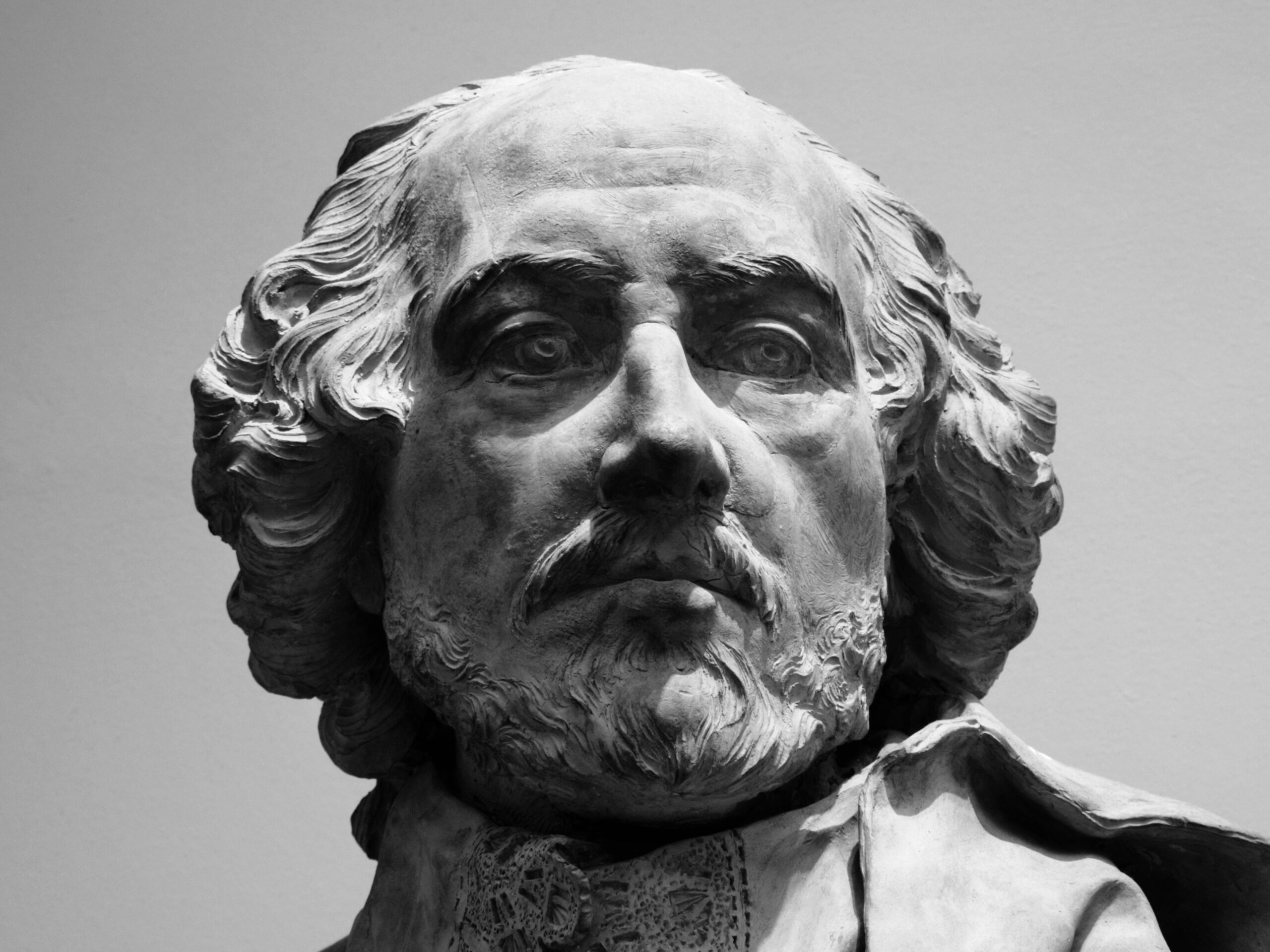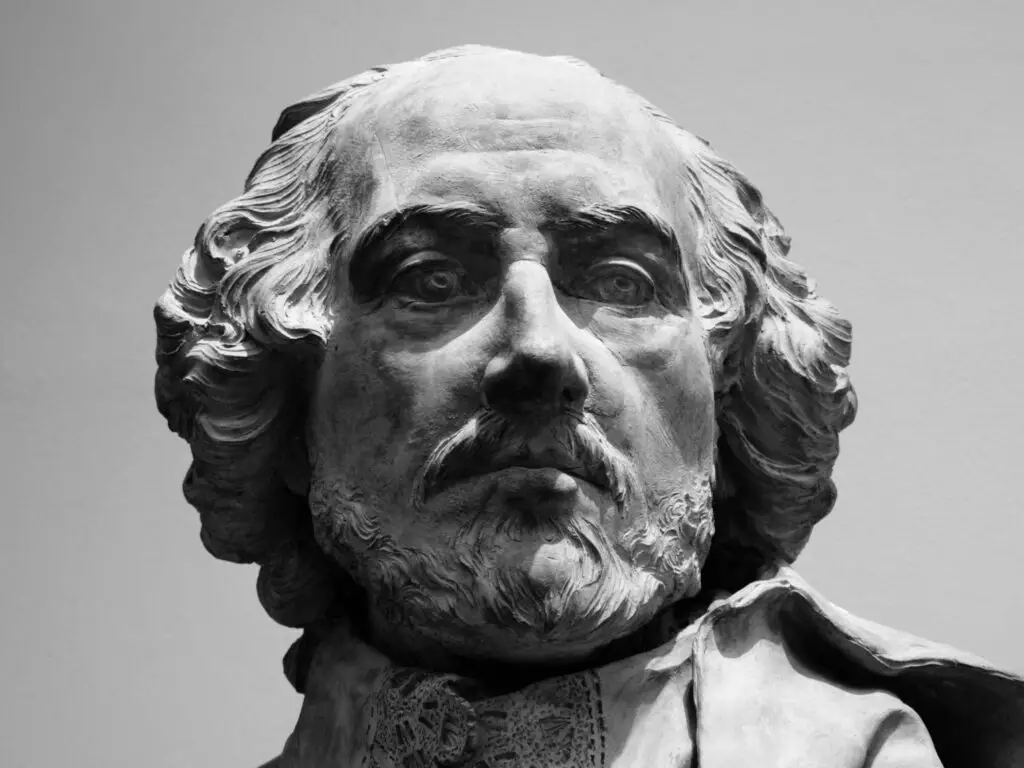Why is Shakespeare Timeless:
I often wonder what Shakespeare would think of his legacy. It would be difficult to imagine what ambitions he had when he began his writing career. Eternal fame, legendary status was, perhaps, not on his bucket list.
To say Shakespeare has become immortal through his sonnets and plays would be a slight of the truth. His writing has become an entity unto itself; the source of inspiration, a living well of creativity that assured the Bard’s spirit was not extinguished at his death.
For centuries, writers and artists have used his plots, his characters, as a standard of excellence and as a means by which to forward their own plots, their own versions of his timeless tales. Agatha Christie, Tom Stoppard, Andrew Harman, Stephen Ambrose and even the band Rush have all been influenced by Shakespeare’s works, a common practice among creative types who seek to enrich audiences with truly stellar entertainment.
But the question remains: Why?
What motivates centuries of artists to “borrow” from the Bard? What is it, specifically, about these canonical works that still impact how stories are told, how characters move from plot to plot?
Kim Askew and Amy Helmes authors of the “Twisted Lit” series, believe it’s because Shakespeare’s works are universal:
The subjects he wrote about: love, ambition, power, greed, betrayal — they’ll never stop being relatable to every new generation. Even if the language Shakespeare used has gotten more difficult to decipher over time, the meaning behind his words is as modern as ever.
Do We See Something of Ourselves in Shakespeare?
In their series, beginning with Tempestuous, the authors put the Bard on his ear, so to speak, and aim to “turn the drama, angst, comedy and passion of Shakespeare into compulsively readable retellings.” These aren’t true to text reimagining, but include “subtle nods to Shakespeare and parallels to his plot-lines and characters.”
Still, is there some deeper meaning to the “Why Shakespeare” question? Is there a connection we, as readers and lovers of the written word, make to the long-dead playwright? Can we see something of ourselves, our lives in his works?
While it’s true that there is a level of “relatability” in contemporary incarnations of his works, can we say that there is something familiar about the originals?
Ben Crystal, author of Shakespeare on Toast, seems inclined to believe that there is:
Shakespeare] never wrote about what it was like to be from Stratford-upon-Avon, or Warwickshire, or England, or even Britain. He wrote about what it is to be human, to love, to lose, to be envious of your best friend’s girlfriend, to become jealous, to kill – he explored the human condition, essentially, which is kind of timeless. Anyone from any cultural background could play Hamlet. It’s about bringing your life experiences to date to the parts, which makes his works pretty universal too.
Contemporary Versions of Shakespeare Works
Seeing contemporary versions of his works is not a new concept. Centuries of writers and decades of filmmakers have taken on the Bard and bent his works for their own interpretations. And while some are simple and, perhaps, a faint shadow of the heart of his plays, others are beautiful reimagining. It’s a trend that will probably never die.
Thomas L. Strickland, Artistic Director and Board President for the North Fulton Drama Club says these contemporary versions of Shakespeare’s work are not surprising. He even produced a steampunk version of The Tempest. But making what is classic into something modern and unique is something he believes would please Shakespeare:
Why reinterpret? Because Shakespeare wouldn’t want it any other way. An innovator is always looking for new tools, new ways to make the imagined real. And besides, these plays are stories of the human condition. Revenge, love, lust, madness, piety, charity, drunkenness—the list of human qualities goes on and on and every single one of them is captured and presented in those 37 plays.
It’s All in Good Fun!
And, mostly, these contemporary incarnations of Shakespeare’s works are done with respect and have their beginnings in a devoted love for the Bard. Askew and Helmes say that it was the initial love for the original plays that brought them to their series and the reception has been positive:
We’re both former English majors, so a fondness for Shakespeare is pretty much a given. The more Shakespeare you see, the more apparent it is that his plays are applicable to just about any era or situation. The librarians and English teachers we’ve encountered seem to love the fact that we’re turning the hallowed scribe on his ear. Hopefully, people can see how much we respect and admire the playwright when they read our books. At the end of the day, it’s all in good fun.
The Differences, Emotions, and Burdens he Faced are Still Relevant
Perhaps these modern versions of Shakespeare’s works are motivated by personal agendas: relating to someone whose works transcend the ages; opening young minds to the Bard’s world and to the eternal struggles that he and his contemporaries faced in their time—struggles that are universal and impact contemporary readers as well.
Ultimately, as Crystal says, Shakespeare’s greatest taught lesson is one that will never be discovered by a fleeting familiarity with his works. It’s much more than that. It’s about opening yourself to the old and discovering that the same differences, emotions, and burdens he faced are still relevant, still present in our own lives:
Most days I get to work with a really, truly great writer, and a line he wrote will teach me something new about life. I don’t much care who he might have been, I’m just glad he did it.
This post was originally published in April 2013



